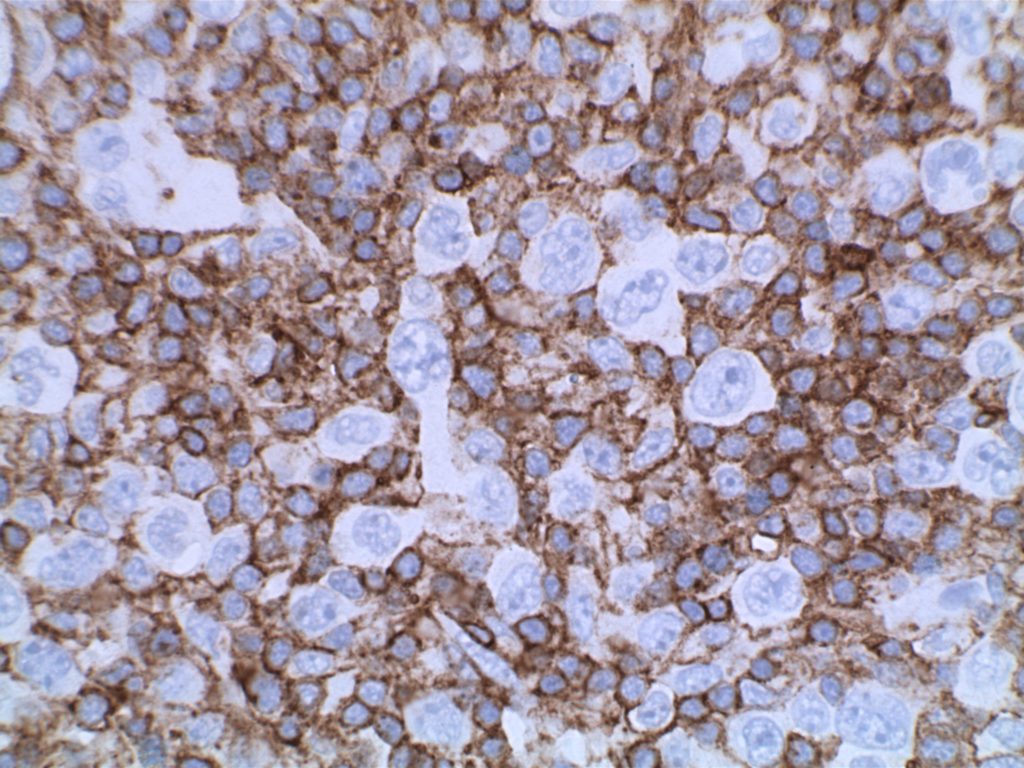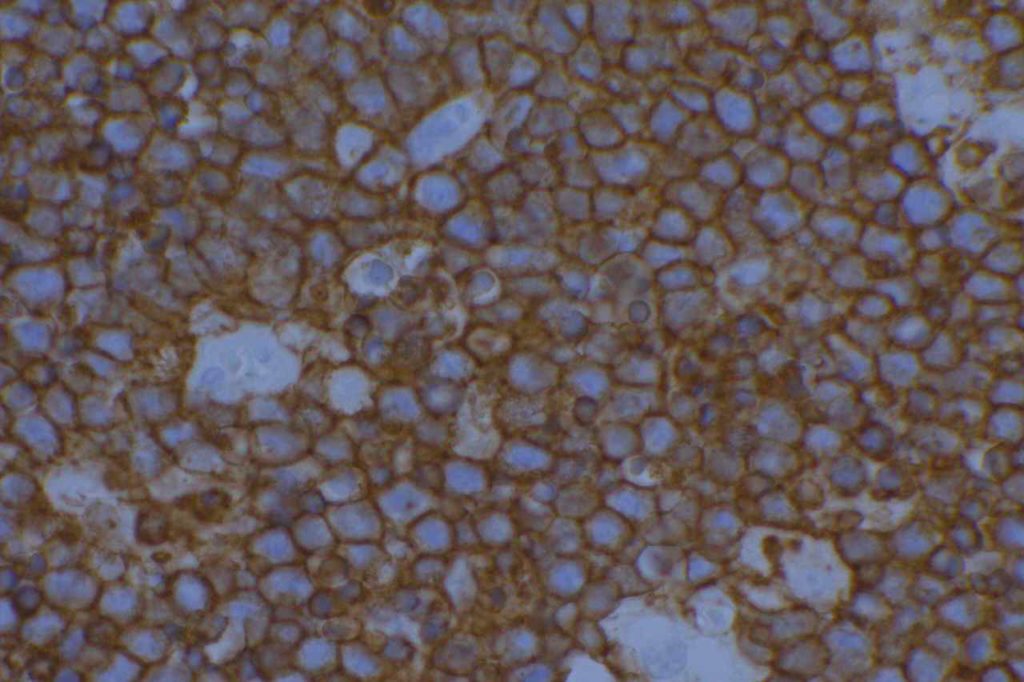The small round blue cell tumor differential includes a wide variety of neoplasms, which in their purest form are morphologically indistinguishable from each other, and are dependent upon IHC and/or molecular studies for classification. The differential diagnosis includes: carcinoma, melanoma, lymphoma, rhabdomyosarcoma, PNET, and desmoplastic small round blue cell tumor.
An easy way to remember the IHC panel is to look at one’s hand. Each finger is a stain, and the thumb is always CD99. The 5 stain panel includes: AE1/AE3, S-100, CD45, Desmin, and CD99.
|
Stain
|
Comments
|
|
AE1/AE3 positivity only is c/w a carcinoma, and f/u with a CK7/CK20 profile panel and neuroendocrine markers (chromo. A, synaptophysin, CD56) is recommended. Co-expression of AE1/AE3 and desmin in the SRBCT setting is c/w a desmoplastic small round blue cell tumor. Co-expression of CD99 and AE1/AE3 may also suggest a poorly differentiated synovial sarcoma.
|
|
|
S-100 positivity is suggestive of a melanoma. Follow-up with melanoma specific markers is recommended (HMB-45, MART-1, etc.).
|
|
|
CD45 expression is c/s a lymphoma, and appropriate follow-up markers (CD3, CD20, etc.) is recommended.
|
|
|
Desmin positivity in isolation in the SRBCT setting is c/w a rhabdomyosarcoma (Myogenin or Myo-D1+ and WT1=) or Wilms Tumor (Myogenin and Myo-D1= and WT1+).
|
|
|
CD99 expression only is c/w a EWS/PNET. It should be noted that almost any other SRBCT may also express CD99 in some cases, and interpretation of CD99 in isolation, without AE1/AE3, Desmin, CD45, and S-100 is NOT recommended.
|
This 5 stain panel is only a screening panel, and more specific stains need to be followed up (e.g. HMB-45 = melanoma, myogenin = rhabdomyosarcoma, CK7/CK20 to further classify carcinomas). An important note, CD99 is the “thumb” because the stain should only be used with the other 4 stains in the panel. While CD99 is fairly sensitive for PNETs, it is NOT specific, and almost everything else on the differential list has been shown to occasionally stain with CD99. If all five markers on the screening panel are negative, then one may consider several possibilities: neuroblastoma (neuroendocrine marker +), lymphoproliferative d/o not expressing CD45 (leukemia, etc. – add CD43), or a carcinoma without AE1AE3 expression (use a second pan keratin marker with a differing cocktail, e.g. CAM5.2).
References
Arch Pathol Lab Med. Vol 132, March 2008.
Kandukuri SR, Lin F, Gui L, Gong Y, Fan F, Chen L, et al. Application of Immunohistochemistry in Undifferentiated Neoplasms: A Practical Approach. Arch Pathol Lab Med. 2017;141: 1014–1032. doi:10.5858/arpa.2016-0518-RA


